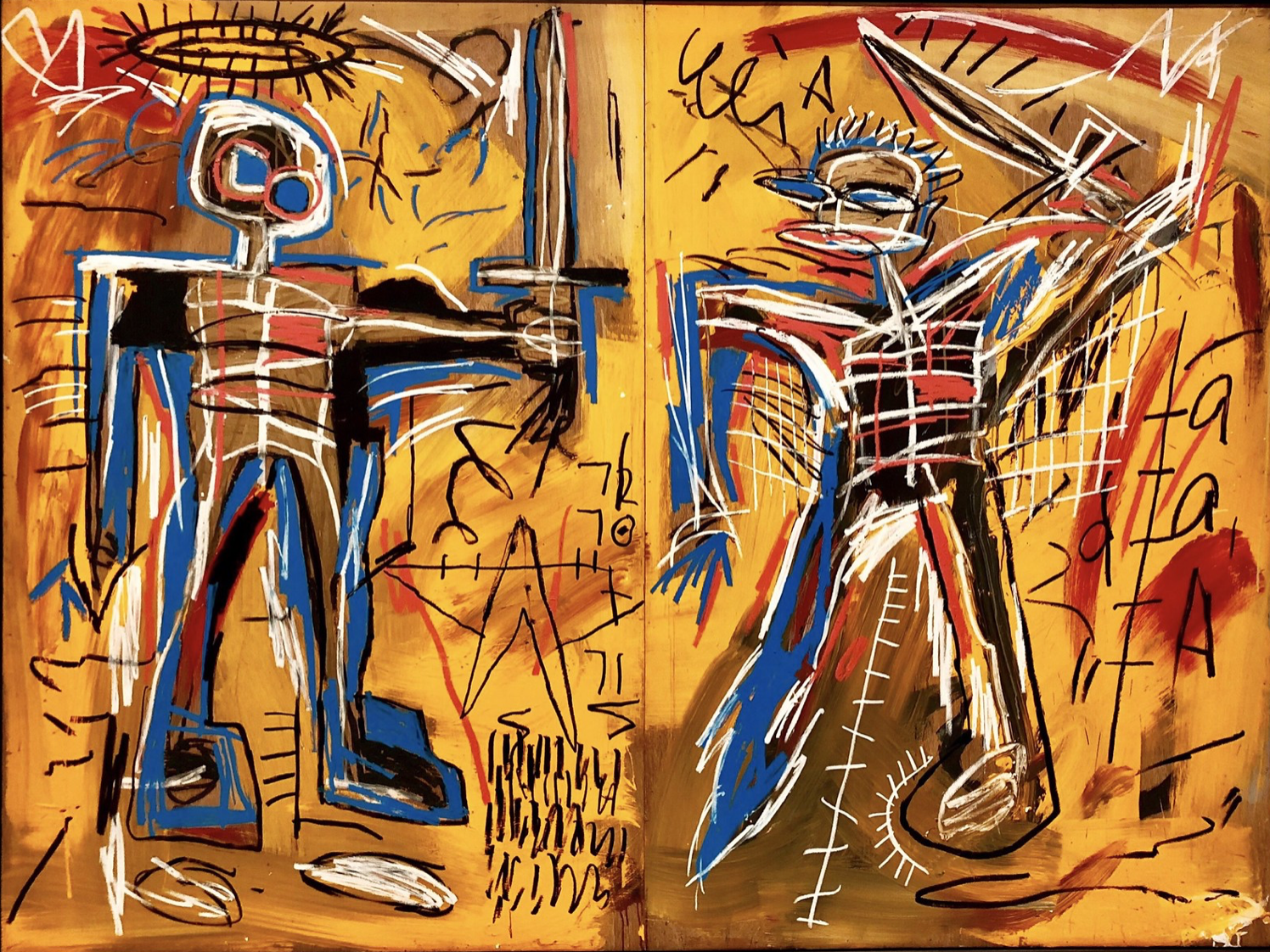Jean-Michel Basquiat: More than a Fashion Trend
Photo credit to Yann Caradec via flickr (@y.caradec)
You may be noticing a new fashion trend increasing in popularity recently: designs featuring neo-expressionist sketches of dinosaurs, faces, cityscapes, and phrases piled on to one another in a loud and almost chaotic amalgamation of figures. Well-known brands like Dr. Martens, Pacsun, and Coach are all starting to put out clothing lines featuring this abstract work. It’s beautiful, cut-throat, idiosyncratic, dynamic and it truly does make for great clothing. However, both the artist behind the designs and what his art stood for are both being overlooked for the sake of a trend.
To know of Jean-Michel Basquiat and the pain and prejudice he transcribed into his work is to better understand the life of a Black artist in America in the 1980s. Basquiat grew from graffiti art to projects in collaboration with Andy Warhol to eventually his own exhibits. Now, post-mortem, brands are rediscovering his design and breathing new life into them. It’s easy to look at these new lines and be distracted by the brands themselves, swept up in the excitement of the latest trend. However, to do so would be a great disservice to a young and talented artist who rose to global fame in a predominantly white industry with art based on messages that are far too persistent in American culture to be considered “trendy.”
Basquiat was born in Brooklyn, New York in 1960, and by age seven he could speak three languages, was enrolled in a private school centered around the arts, and was writing his own children’s books in his free time.
His original pseudonym “SAMO” stood for “Same old shit,” and the signature would be featured in the graffiti art he did throughout the late 70s. Even his early work featured social commentary, including one with the phrase, “SAMO– for those who merely tolerate civilization” spray-painted on the side of a building. Expelled from and then dropping out of school at age 17, Basquiat worked retail during the day and devoted his nights to graffiti. When SAMO’s work began to garner public recognition, Basquiat began making small prints and postcards, and this is when he crossed paths with Andy Warhol, sparking what eventually became a famous partnership of two of the biggest artists of their time.
In the 80s he began to be featured in exhibitions. He sold his first piece to the lead singer of Blondie for $200 in 1981. In 1982, he became the youngest artist to ever be featured in documenta in Kassel Germany. At just 22-years-old, he produced his renowned piece “Untitled (skull)” that sold for $110 million in an auction in 2017.
With an increase in fame came a crippling dependency on drugs. In 1988, Basquiat died of a heroin overdose at age 27. At that point, he’d been making $1.4 million per year in addition to the thousands he would commission from art dealers. In a career of just seven years, Basquiat produced around two thousand pieces and became one of the first Black artists to become a leader in the art industry.
Growing up as a Black artist in New York drove Basquiat to center most of his work around the Black American experience. His art pays homage to the Black experience and captures themes such as racial discrimination, slavery, oppression, and triumph. His incorporation of pentimento techniques illustrates the voices of those who were silenced or ignored because of their race.
Today, we are seeing an artist who was notoriously anti-capitalist and constantly critiqued the art market being featured in clothing lines, worn without a second thought of the life he lived and the message for which his art stood. In the words of Basquiat, “Black people are never really portrayed realistically – I mean, not even portrayed realistically, but not even portrayed – in modern art enough.” It is not enough for a brand to put “BASQUIAT X ___” on their website and wash their hands of the recognition Basquiat deserved. Using his work without recognizing the immense impact he had on the art industry and the messages within his work is to take advantage of his talent and to delegitimize his experience as a Black artist at a time when Black artists were ostracized. If brands continue to use his art as a trend without paying the respect and credit he deserves, Basquiat’s name will be lost with the countless other artists of color who are too often overlooked. So before you purchase, reflect on what the art you’re about to wear really means.

